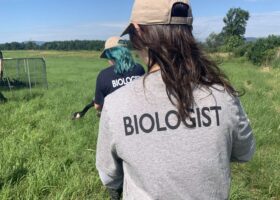
Weekly Reflections from a Summer at VCE
Working with VCE this summer has been immensely rewarding, seeing the animals I love in person and seeing how environmental disturbance affects them in real life. Birds hold a special place in my heart (I have a somewhat unattainable goal of seeing every species in North America before I die), and I’m proud to say I added 42 new birds to my Life List this summer.
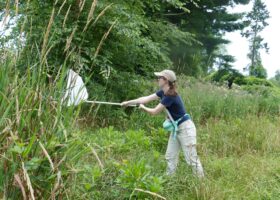
Smith Richardson Wildlife Preserve Visit
VCE has been busy this summer! In addition to asking cutting-edge ecological questions, we are also helping colleagues tackle their conservation problems. This summer, VCE conservation scientist Dr. Desiree Narango and the rest of the technician team have been helping Connecticut Audubon with a key wildlife preserve in Westport, Connecticut.
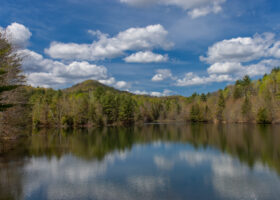
Field Guide to May 2024
The month of May is a show-off. Birds arrive on southern winds and liven the dawn with their chorus. Trees flower, and leaves burst from long-dormant buds. As pools and lakes awaken with new life, woodland wildflowers jump out of the ground to attract the attention of butterflies. Here’s your monthly guide to a month that shouts of life and rejuvenation.
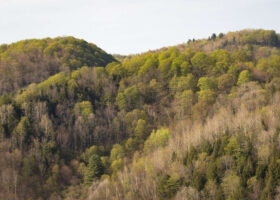
Field Guide to April 2024
As grays and browns permeate the muddy landscape of late spring, summer colors lie just beneath the surface, almost ready to bloom. Strolling through your neighborhood or favorite woodland in April, you may begin to notice flashy dapples of the season’s first wildflowers. The trees around you will start to reverberate with birdsong while the ponds echo with choruses of Wood Frogs and Spring Peepers. If you’re lucky, you may even catch the buzz of an early-season bee as it forages. Here’s our guide to some of the new life bursting forth this month.
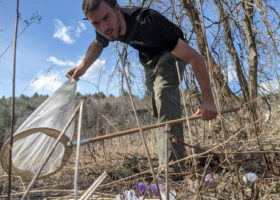
VCE is Abuzz with High-impact Bee Work
For over a decade, VCE has been positively buzzing with activity, surveying far and wide for bee species across the state. Our efforts kicked off with the Bumblebee Atlas in 2012 and reached a crescendo in 2022 with the State of Vermont’s Wild Bees report. Little did we know that this would start a multi-state ripple of pollinator work.
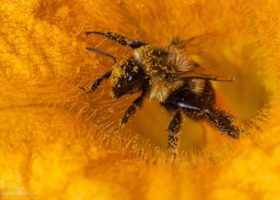
VAL Director Provides Testimony on Proposed Neonicotinoid Ban
On February 9, 2024, VCE Conservation Biologist and Vermont Atlas of Life Director Kent McFarland provided testimony to the Vermont State Agriculture, Food Resiliency & Forestry Committee on H.706, a bill requiring restrictions on neonicotinoids. What follows is the text from the written testimony.
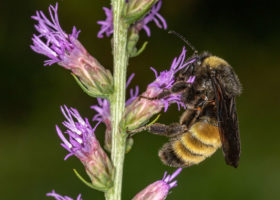
Meet Vermont’s Newest Endangered Species
The latest Vermont Endangered and Threatened species list celebrated the recovery of Bald Eagles and the Canada Black Snakeroot, while five new species and three critical habitats were added. Learn about the newest members of the list that will need our help for their recovery.
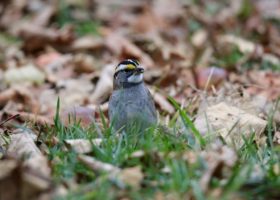
Leaf it Be — ditch the rake this fall to promote insect populations around your home
This autumn, consider opting for less intensive yard maintenance practices to foster more biodiversity in your yard this season and beyond. By planting native late-blooming plants, leaving leaves where they fall, and preserving standing rigid vegetation, you will be providing winter homes and food sources for invertebrates, birds, and other winter residents.
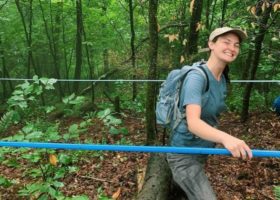
Birds, Bees, and Trees: A Summer Working for VCE
From long days spent in wooded hillsides to early mornings on top of Mt. Mansfield, it was a busy—but exciting—summer for VCE’s 2021 Alexander Dickey Conservation Intern.

Powerlines and pollinators: undervalued and underappreciated
Just as hayfields are essential habitat for grassland birds like Bobolinks, consensus is building that the scrubby open habitat maintained under utility rights-of-way (ROW) plays an important role in the conservation of a diverse suite of wildlife. We’re looking to connect with landowners in north-central Vermont with ROWs on their property about conducting weekly surveys for pollinators this summer.
